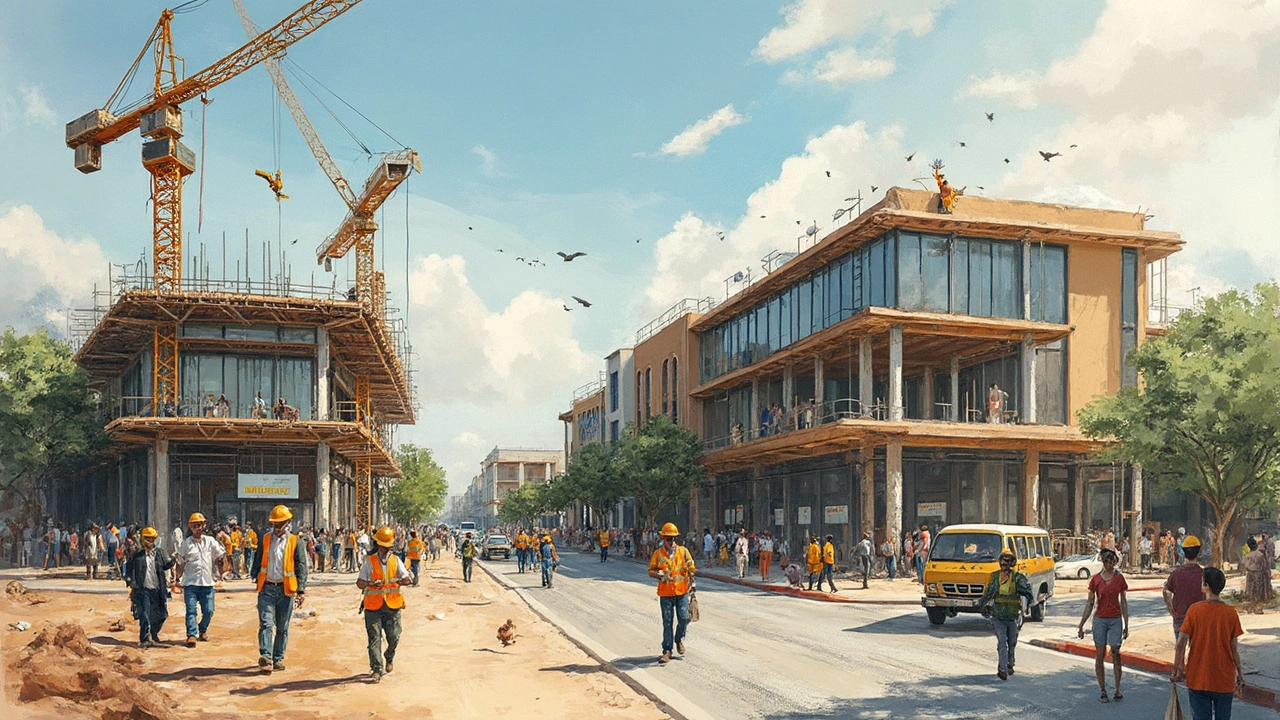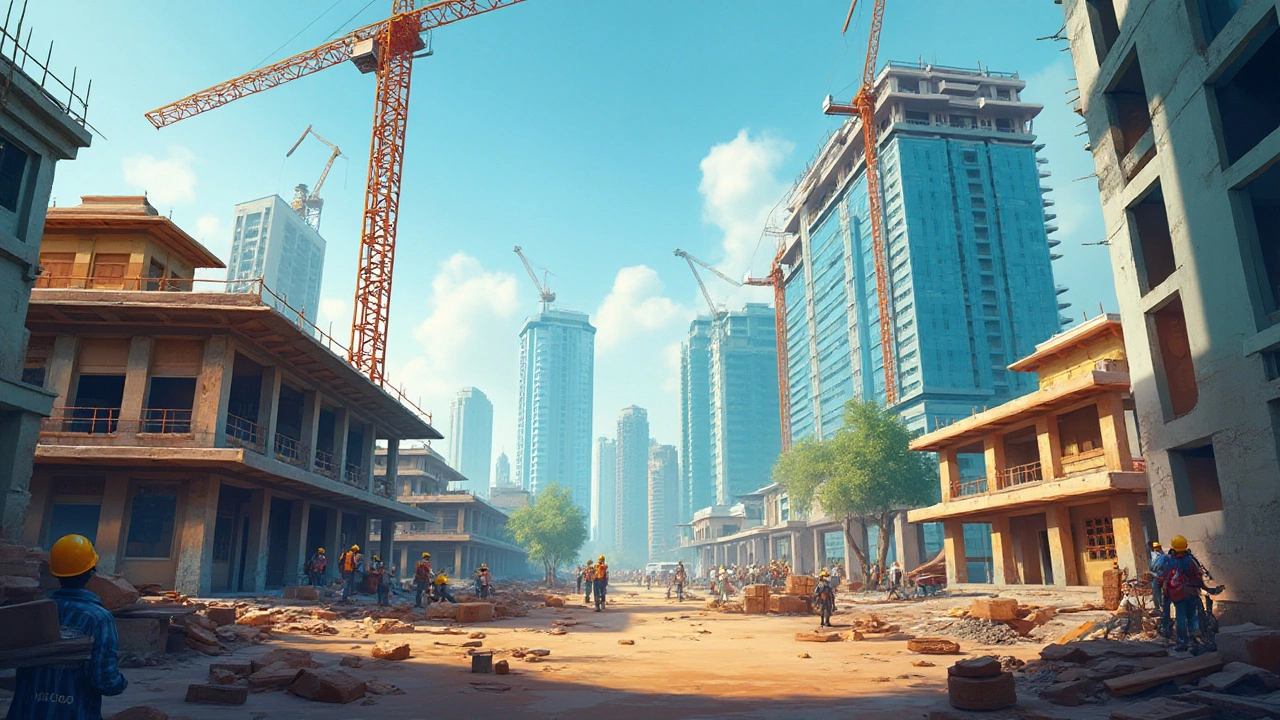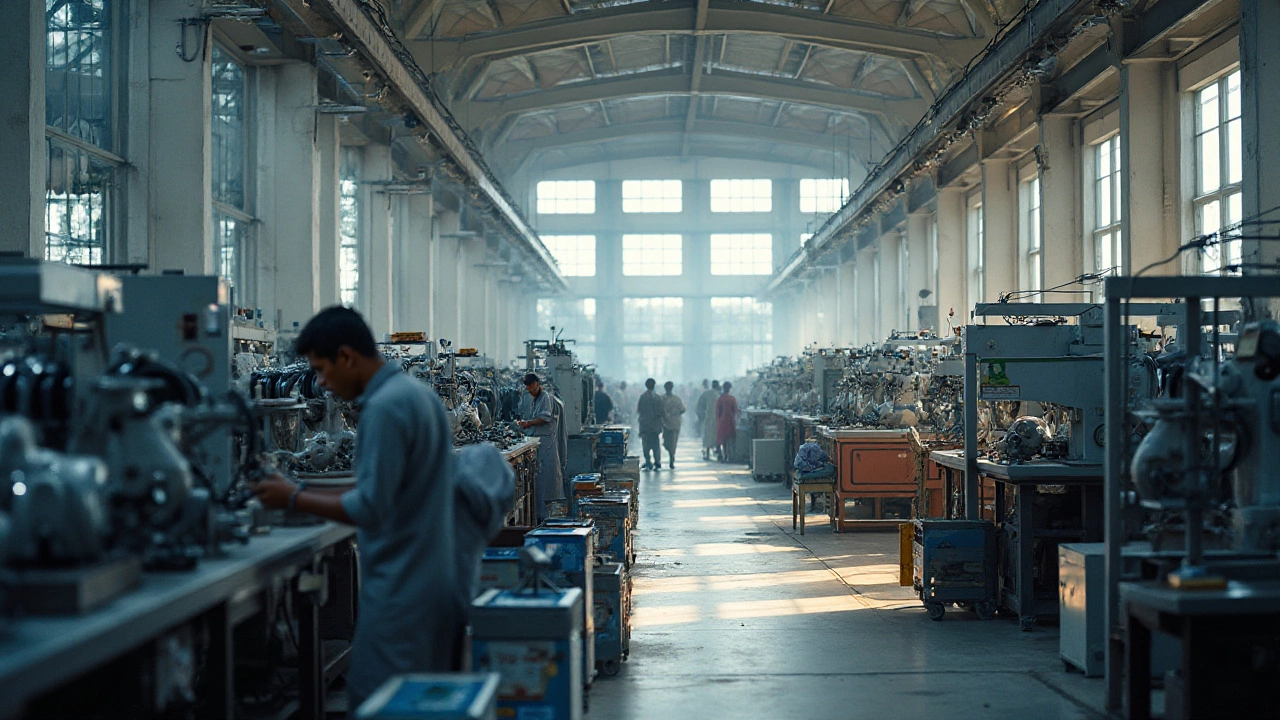Is Construction Commercial or Non-Commercial?

You know what's fascinating about construction? It's like its own universe, with distinct planets and rules. One big distinction people often scratch their heads over is: what exactly makes a project 'commercial' or 'non-commercial'? Each serves its own world of purposes and is driven by different needs.
Commercial construction is kind of like those big blockbuster movies. We're talking high-budget, sleek buildings like offices, shopping centers, hotels—stuff that's created to churn a profit and keep the economy buzzing. These projects are intense, often demanding specific safety standards and a strategic location to appeal to customers and clients.
But what about non-commercial construction? Think more like your local library, variety of schools, or that cozy community center. They're not about making money but serving the public. The goal here is function and accessibility, often funded by government or non-profit organizations, focusing on community benefit over financial gain.
- Defining Commercial and Non-Commercial Construction
- Characteristics of Commercial Construction
- Non-Commercial Construction Insights
- Understanding Project Scale and Purpose
- The Economic Impact of Construction Types
- Tips for Navigating Construction Projects
Defining Commercial and Non-Commercial Construction
Alright, let's break down the basics of what sets commercial construction apart from its non-commercial cousin. It's more than just the size of the building or the number of floors; it boils down to the primary goal and type of occupants.
Commercial construction projects are like the busy bees of the industry. Their main aim is profitability and serving businesses. Think about your favorite coffee shop, the mall where you hang out, or those shiny new office buildings downtown. These structures cater to business needs, designed to either sell goods, offer services, or provide a workspace.
On the flip side, non-commercial construction projects focus on serving communities without direct financial gain in return. These are the places that impact daily life and give people a sense of community. Examples include public schools, government buildings, and hospitals. While they might not generate profit like commercial spaces, they're essential for the functioning of society.
An interesting fact is how funding differs between the two. Commercial projects often involve private investors or companies looking to make a return on investment. In contrast, non-commercial buildings mostly rely on government funding or donations from non-profits.
Here's a quick glimpse of some differences:
- Purpose: Commercial is for business growth. Non-commercial aims for public service.
- Funding: Commercial relies on private investors; non-commercial often uses public or charitable funding.
- Occupants: Businesses occupy commercial spaces, while communities use non-commercial ones.
When you think about it, both types are essential. They keep our economies running and communities thriving. Knowing the differences can help you navigate the industry better, whether you're planning a career in construction or just curious about the buildings around you.
Characteristics of Commercial Construction
Diving into the world of commercial construction, you quickly realize it’s not your run-of-the-mill project type. These are big, bold ventures, usually linked to profit-making businesses, major corporations, or public services.
What's the first thing to stick out? Scale. These projects are often massive, sometimes spanning acres. Whether it’s a shopping mall, office skyscraper, or a slick new hotel, the size and scope can be staggering.
The economics are another key piece of this puzzle. With high upfront costs, commercial construction is all about return on investment. It involves a hefty budget, steered by heavy planning and rigorous financial oversight. More money means more at stake, leading to stringent timelines and intricate project management.
Location is the king here, too. You don't just plop a high-gloss mall anywhere; picking the right spot can make or break the project. Accessibility and visibility are crucial for drawing in droves of potential customers and ensuring sustained business growth.
Safety and regulations in commercial construction are tightly controlled. Compliance with laws and codes is non-negotiable. Builders often work with experts to ensure each step ticks all the right boxes, aiming to avoid costly delays or problems down the road.
- Client-Centric Focus: Meeting client needs and expectations is paramount, often requiring custom designs and detailed planning processes.
- Advanced Technology: Many commercial projects such as high-tech offices or hospitals integrate cutting-edge technology, from smart systems to green building materials.
- Specialized Workforce: These projects demand a pool of skilled professionals—from architects to engineers—each bringing specific expertise to the table.
These characteristics make commercial construction not just another building task but an elaborate dance of design, finance, and location strategy, all working in harmony to create spaces that aren’t just built, but truly thought out.
Non-Commercial Construction Insights
When talking about non-commercial construction, we're diving into projects that focus on benefiting the public rather than turning a profit. This type of construction is all around us—think public schools, hospitals, and government buildings. These facilities are essential to community infrastructure, providing vital services that support everyday life.
Typically, non-commercial projects are funded through public sources, like government budgets or grants from non-profit organizations. This means that the construction process can sometimes face challenges due to budget constraints or bureaucratic hurdles. However, these projects are crucial for functioning societies, ensuring that services reach everyone who needs them.
One cool thing about non-commercial construction is how it often emphasizes sustainability and accessibility. Projects might incorporate eco-friendly materials or renewable energy sources, aiming to reduce environmental impact. Accessibility is equally important—think ramps, elevators, and tactile paths to accommodate everyone, including those with disabilities.
Let's look at some key aspects:
- Community Needs: Non-commercial projects usually aim to fill a gap or service a need in the community. This might mean a new local health clinic or a revamped public library.
- Public Involvement: There’s often a focus on community engagement, meaning locals have opportunities to provide input on designs and services offered.
- Long-Term Benefits: While they might not make cash, these projects improve quality of life, like better learning environments in schools leading to improved education outcomes.
Budgeting for these projects can be tricky but necessary. Every dollar spent is usually accountable, focusing on maximizing community benefit while minimizing costs.
Lastly, non-commercial construction plays a key role in disaster recovery. After natural disasters, the focus is on rebuilding essential services quickly—getting communities back on their feet. It might even pave the way for improvements, like flood-resistant buildings.

Understanding Project Scale and Purpose
When it comes to commercial construction, size really does matter, but so does purpose. These projects aren't just random—they're carefully planned and executed based on specific demands. First off, the scale of a project often aligns directly with the goals and outcomes expected from it.
Let's break it down a bit. Large-scale projects often include huge skyscrapers, mega malls, and extensive office complexes. These are designed to handle a lot of traffic, maximize space, and bring in significant income. Decisions here are often influenced by market research, financial projections, and, of course, zoning laws.
On the other hand, non-commercial projects focus more on serving communities than on turning a profit. These might include libraries, schools, and parks—places where it's all about the service they provide rather than the money they make. Their purpose is rooted in social benefit, community enrichment, and sometimes, historical preservation.
"A project’s scale and purpose directly impact its planning and execution," explains John Matson, a seasoned architect in the industry.
For anyone planning or interested in construction, understanding these differences is crucial. They help in anticipating the needs of the project and ensuring all legal and logistical aspects are lined up. Whether you're thinking about starting a new venture or just curious, it's clear that both kinds of projects play a significant role in shaping our environments and economy.
Imagine starting a project without a clear purpose. It's like trying to bake a cake without knowing what flavor it should be. Always keep in mind what the end goal is, and let that guide every step, from initial planning to final touches.
The Economic Impact of Construction Types
Construction is more than just putting up buildings—it's a massive driver of economic activity. When you think about commercial construction, it's pretty easy to see why. Building office spaces, malls, or hotels generally means creating jobs, both temporary ones during construction and long-term positions once the buildings start operating. This fuels local economies by increasing demand for labor and materials.
| Type of Construction | Estimated Economic Impact |
|---|---|
| Retail Malls | $20 million per project |
| Office Buildings | $35 million per project |
| Hospitals | $50 million per project |
Non-commercial construction, on the other hand, might not be such a cash cow, but it's just as vital. When you're building a new school or library, you're investing in the community's future. Though these projects are often government-funded and don't directly generate income, they improve property values and quality of life, leading indirectly to economic boosts.
Let's not forget about the multiplier effect, eh? When a new project kicks off, it brings a ripple of spending throughout the community—from construction workers buying lunch at local diners to suppliers hiring more staff to meet demands. And it's not just about the money; it's the impact on lives, creating smooth roads, better hospitals, and places where memories get made.
Also worth mentioning, the construction industry is like a canary in a coal mine for the economy. A rise in construction projects often hints at economic growth, while a downturn can be a red flag. It's a huge indicator of how healthy an economy is, and by keeping an eye on construction trends, you can get a sneak peek at where things might be headed.
Tips for Navigating Construction Projects
Diving into a construction project can feel a bit like trying to catch a tornado with a butterfly net—it's complex and can get out of control if you're not prepared. So, here are some straightforward tips to help you sail smoothly through the chaos.
First off, understanding the scope is critical, whether it's commercial construction or a non-commercial endeavor. What are you aiming to achieve? Clarify your goals to align everyone on the same page. This clarity helps avoid costly detours.
Once that's clear, think about your team. A construction project is only as strong as the people who build it. Vet your contractors—check their references, previous work, and credentials. You're looking for reliability and expertise here.
Another big piece is budgeting. Create a realistic budget and stick to it like glue. Factor in unexpected costs because, let’s be real, they always pop up. A little buffer goes a long way in keeping stress levels down.
Here's where timelines come into play. Set a timeline that’s practical. You’d be surprised how often people underestimate how long things take. Be prepared for hiccups like weather delays or supply chain disruptions.
Are you keeping the paperwork in check? Permits and regulations are no joke in the construction industry. Don’t skip these steps unless you enjoy setbacks and fines.
Lastly, communication can't be overstated. Regular updates and open channels with your team make the difference. Think of communication as the oil in your construction machine.
Here's a little pro tip: Track trends and keep an eye on stats. For example, did you know that the U.S. construction industry is projected to grow at a rate of 8% annually? Being aware of such data helps in anticipating market changes and needs.
| Year | Projected Growth Rate |
|---|---|
| 2024 | 7% |
| 2025 | 8% |
| 2026 | 8% |
By taking these tips to heart, you're setting up your project for success, commercial or otherwise.

